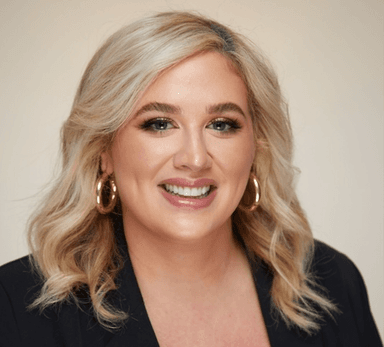Your Silos Are Showing: The How and Why of Fostering Collaboration at a Time of Accelerating Digital Transformation
Published on July 13, 2018/Last edited on July 13, 2018/6 min read


Marissa Aydlett
SVP of Marketing at BrazeI’ve recently returned from Cannes Lions, where the talk of the town this year was less about the yacht parties and more about the ramped-up pace of change around the customer experience. Marketers and partners I talked to were hungry for new ways to respond and adapt in the moment, knowing that a miss is sure to mean both wasted effort and a hit to the bottom line.
One big problem? Mobile serves as the remote control to our connected environments, and it's driving an acceleration of innovation for companies. Frankly, it's hard for them to keep up, much less innovate. Organizations and their teams aren't ready for it. Many are operating on outdated systems and looking at stale customer data. At the Girls’ Lounge, a panel of pretty badass women shared with me what they’ve learned about pulling teams together, and why it’s probably the most important part of their jobs.

I know the feeling myself. There was a certainly a moment during our Braze (formerly Appboy) rebrand last fall when I wasn’t sure that I could convince my peers of what needed to be done for this important project, and I got some great advice from the President and Chief Customer Officer. He told me that instead of thinking about that infamous glass ceiling, I should just keep pushing through the glass walls I encountered between teams— shattering those glass walls as I moved forward. It’s a powerful image.
Panelist Sharon Harris, VP, Alliance Relationships, Deloitte Consulting, underscored the importance of team dynamics: “That whole process of collaboration is the new workforce model. How you ultimately build a collaborative team is really critical today.” And collaboration isn’t just for those in the trenches. Also on the panel, Lilian Rincon, Director of Product Management for the Google Assistant, said that at Google, “The more senior you are, the more you are expected to collaborate with other product units, and it’s actually more important to figure out how to make other product units succeed rather than your own.”
The more senior you are, the more you are expected to collaborate with other product units, and it’s actually more important to figure out how to make other product units succeed rather than your own.
Of course, when we talk about facilitating effective cross-team collaboration, what we’re really talking about is how to help people work better together. Clarity of communication around shared company goals, panelists agreed, is central to people’s ability to get sh*t done. As leaders, we may be tempted to keep things under wraps until we’ve smoothed out the rough edges, but in today’s fast-paced environment, we can’t let the perfect be the enemy of the good.
Our people can’t commit to what they don’t know about, and every player on every team deserves to understand the context of the tasks they’re assigned. Sharon Harris put it well: “Your ask needs to be very simple. It’s your ask, but what’s in it for them? Because that’s how people operate. It’s about their own personal motivations, and if you aren’t able to make those connections, you’re not going to get to ‘yes.’” And not getting to “yes” with your teams means you’re not going to be able to reach those broader company goals.
As leaders, we may be tempted to keep things under wraps until we’ve smoothed out the rough edges, but in today’s fast-paced environment, we can’t let the perfect be the enemy of the good.
It feels risky to share less-than-fully-baked objectives, I know, but the greater risk is in the loss of momentum or “paralysis by analysis” that happens when people are fuzzy on how their efforts ladder up to the organization’s overall objectives and key results. That lag before OKRs go out to the whole team means valuable time is wasted. Melissa Barnes, Head of Global Brands at Twitter, took on the responsibility: “Good leaders create the environment for people to succeed. Great talent is motivated by the experiences that they’ll have and the problems they get to solve, and the stories they’ll be able to tell about their time at the company.” It’s on us as leaders to spell out the connections between the company’s roadmap and individuals’ career paths, and to make sure we clear the way forward for both.
Teams and players will differ in their angles of approach to achieving success, and alignment on who does what is key to efficiency. “I think you get in trouble on projects, you get in trouble with clients, you get in trouble with process if it isn’t clear who is the real owner. You have to say, ‘You’re in charge of this,’” says Barnes. On my team at Braze, we work through the RACI on each program, so everyone understands who is responsible, who’s accountable, who can (and should) be consulted, and who’s to be kept informed. We also put the program objective in writing. As Lilian Rincon reminds, “The danger with creating swimlanes is that everybody gets to the end of their lane, looks up and around, and it’s like, ‘I forgot why we’re doing this.’” Or as Joy Robins, CRO of Quartz, put it, “You get to the end of your swimlane and you look up? And you’re just effing tired!”
Good leaders create the environment for people to succeed. Great talent is motivated by the experiences that they’ll have and the problems they get to solve, and the stories they’ll be able to tell about their time at the company.
No wonder we’re tired—keeping up with the pace of change while keeping our people motivated isn’t easy, and there are days when it feels close to impossible. But look around: You’ve worked hard to build a skilled team you can trust to get the job done. Sure, sometimes people need to be reminded of their own value proposition, per Lilian Rincon: “You know you’re a problem solver. And, actually, we have a problem to solve. This is great!”
Let’s face it, though—others can’t step up if we, as leaders, keep swooping in like superheros when things break down. Better to give our teams room to exercise their own superpowers, secure in the knowledge that, as Joy put it, “You’re not going to get fired for trying.” Feeling safe to be one’s real, best self at work is doubly important when the going gets tough. Citing a Google study, Twitter’s Melissa Barnes pointed out, “The thing that created the highest performance teams was that people felt safe. And if people feel safe, they’re more likely to offer more ideas.”
I think good leaders lead a company to the point where, if they left tomorrow, the company would actually continue to run just as brilliantly as when they were there.
Joy zeroed in on the ultimate goal: “I think good leaders lead a company to the point where, if they left tomorrow, the company would actually continue to run just as brilliantly as when they were there.” Making sure tools are in place that make it easier for teams to work well together is one thing you can do today to build that future legacy. Productive collaboration isn’t just a feel-good exercise, either. Find the metrics to track growing success for your business as your teams’ collaboration skills kick into high gear. Take a look at the Braze Cross-Channel Difference Report for some ideas of benchmarks to establish to connect your internal teams to your external experience...and let me know how it works out!
Related Tags
Be Absolutely Engaging.™
Sign up for regular updates from Braze.
Related Content
View the Blog
The future of payments: Enhancing innovation and trust in a changing landscape

Erin Bankaitis

Multichannel optimization: Unlocking a more cohesive strategy for engaging customers

Team Braze

Customer engagement must-haves for peak shopping season
